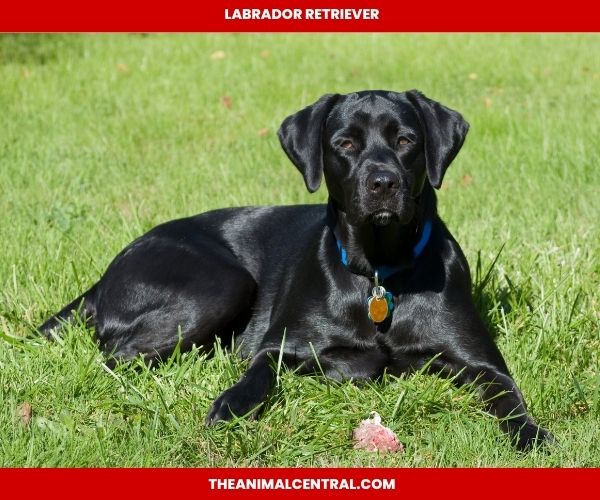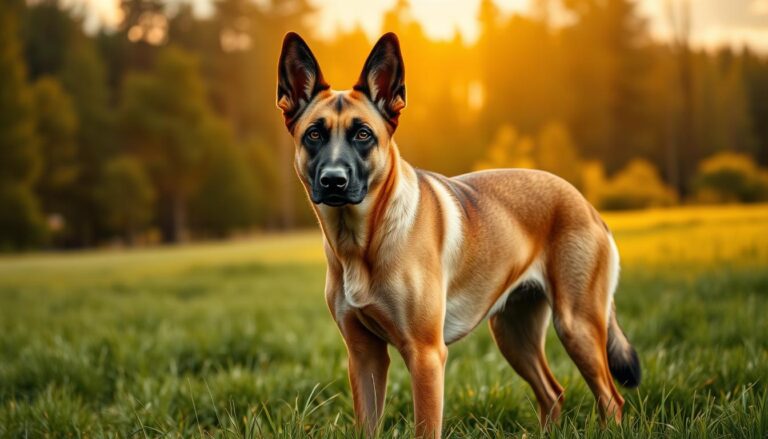Dogs have been serving humans for centuries, providing companionship, loyalty, and protection. However, some breeds were born to work and are happiest when given a job to do. These breeds have innate abilities that make them excel in certain tasks, from herding livestock to guarding property to pulling sleds. In this article, we’ll discuss the top 10 dogs born to be working dogs and what makes them so well-suited to their jobs.
What are working dogs?
Working dogs are dogs that have been bred to perform specific tasks and are trained to do so. These tasks can include herding, hunting, guarding, pulling sleds, and assisting humans with disabilities. Working dogs are intelligent, energetic, and highly trainable, with a strong desire to please their owners. They thrive on being given a job to do and take pride in performing it well.
The importance of working dogs
Working dogs play an important role in our society. They are used by law enforcement agencies to sniff out drugs and explosives, by search and rescue teams to find missing persons, and by farmers to help manage livestock. They also make great companions for people with disabilities and are trained to assist them with everyday tasks. Working dogs are highly valued for their intelligence, loyalty, and dedication to their jobs.
The top 10 dogs born to be working dogs
Border Collie

The Border Collie is considered the ultimate herding dog. It was originally bred in Scotland and England for herding sheep and has since become one of the most popular dogs for dog sports and agility competitions. Border Collies are highly intelligent and trainable, with excellent problem-solving skills. They are also known for their intense focus and incredible work ethic, making them ideal for tasks that require precision and concentration.
German Shepherd

The German Shepherd is a versatile working dog that has been used for a wide range of tasks, including herding, search and rescue, and law enforcement. They are highly intelligent, loyal, and obedient, and are known for their courage and fearlessness. German Shepherds are also very protective of their owners, making them excellent guard dogs.
Labrador Retriever

The Labrador Retriever is one of the most popular dog breeds in the world, known for its friendly and outgoing personality. They were originally bred in Canada to assist fishermen in retrieving fish and nets from the water, but have since become popular as family pets and hunting companions. Labradors are highly trainable and have a strong desire to please their owners, making them excellent gun dogs.
Siberian Husky

The Siberian Husky is a working dog that was originally bred in northeastern Asia for use as a sled dog. They are highly athletic and have incredible endurance, making them ideal for long-distance races and expeditions. Huskies are also very friendly and outgoing, and are known for their loyalty and affectionate nature.
Belgian Malinois

The Belgian Malinois is a breed of dog that was originally bred in Belgium for herding and guarding livestock. They are highly intelligent, obedient, and trainable, and are often used in law enforcement and military applications. Malinois are also known for their courage and fearlessness, making them excellent protection dogs.
Australian Cattle Dog

The Australian Cattle Dog, also known as the Blue Heeler, was originally bred in Australia for droving cattle over long distances. They are highly intelligent and energetic, with a strong work ethic and natural herding instincts. Cattle Dogs are also known for their loyalty and devotion to their owners, making them excellent companions and watchdogs.
Rottweiler

The Rottweiler is a breed of dog that was originally bred in Germany for herding and guarding livestock. They are highly intelligent and trainable, and are known for their strength and courage. Rottweilers are also very protective of their owners, making them excellent guard dogs.
Doberman Pinscher

The Doberman Pinscher is a breed of dog that was originally bred in Germany as a protection dog. They are highly intelligent, loyal, and obedient, and are known for their fearlessness and tenacity. Dobermans are also very protective of their owners, making them excellent guard dogs.
Bernese Mountain Dog

The Bernese Mountain Dog is a breed of dog that was originally bred in Switzerland for use as a farm dog. They are highly intelligent and loyal, and are known for their gentle and affectionate nature. Bernese Mountain Dogs are also very strong and sturdy, making them excellent for tasks such as pulling carts and sleds.
Boxer

The Boxer is a breed of dog that was originally bred in Germany as a hunting and protection dog. They are highly intelligent and energetic, with a strong desire to please their owners. Boxers are also known for their loyalty and affectionate nature, making them excellent family pets and watchdogs.
Border Collie: The ultimate herding dog
History and origin
The Border Collie originated in Scotland and England in the 1800s and was originally bred for herding sheep.
Characteristics
Border Collies are highly intelligent, energetic, and athletic dogs. They have excellent problem-solving skills and are known for their intense focus and incredible work ethic.
Training
Border Collies are highly trainable and respond well to positive reinforcement training methods. They excel in dog sports such as agility, obedience, and herding trials.
Work ethic
Border Collies are known for their intense work ethic and will work tirelessly to complete a task. They are excellent at herding livestock, and their focus and precision make them ideal for precision tasks such as sheepdog trials.
Health and care
Border Collies require a lot of exercise and mental stimulation to stay healthy and happy. They also need a nutritious diet and regular veterinary care to maintain their health. Common health problems in Border Collies include hip dysplasia, eye disorders, and epilepsy.
German Shepherd: The versatile working dog
History and origin
The German Shepherd was developed in Germany in the late 19th century as a herding dog. They were later used in various roles such as search and rescue, police, and military work.
Characteristics
German Shepherds are intelligent, loyal, and courageous dogs. They have a strong protective instinct and are highly trainable.
Training
German Shepherds respond well to positive reinforcement training methods and excel in obedience, agility, and protection training.
Work ethic
German Shepherds have a strong work ethic and are highly focused and determined when given a task. They are often used as police and military dogs, as well as search and rescue dogs.
Health and care
German Shepherds require a lot of exercise and mental stimulation to stay healthy and happy. They also need a nutritious diet and regular veterinary care to maintain their health. Common health problems in German Shepherds include hip dysplasia, elbow dysplasia, and bloat.
Labrador Retriever: The friendly and versatile working dog
History and origin
The Labrador Retriever originated in Newfoundland, Canada, and was originally bred to assist fishermen in retrieving fish and nets from the water.
Characteristics
Labrador Retrievers are friendly, outgoing, and intelligent dogs. They have a strong desire to please their owners and are highly trainable.
Training
Labrador Retrievers respond well to positive reinforcement training methods and excel in obedience, retrieving, and hunting training.
Work ethic
Labrador Retrievers have a strong work ethic and are often used as guide dogs, search and rescue dogs, and therapy dogs.
Health and care
Labrador Retrievers require a lot of exercise and mental stimulation to stay healthy and happy. They also need a nutritious diet and regular veterinary care to maintain their health. Common health problems in Labradors include hip and elbow dysplasia, eye disorders, and obesity.
Siberian Husky: The ultimate sled dog
History and origin
The Siberian Husky originated in northeastern Asia and was bred for use as a sled dog.
Characteristics
Siberian Huskies are energetic, athletic, and intelligent dogs. They have incredible endurance and excel in long-distance racing and expeditions.
Training
Siberian Huskies respond well to positive reinforcement training methods and excel in sledding, obedience, and agility training.
Work ethic
Siberian Huskies have a strong work ethic and are highly focused and determined when given a task. They are often used as sled dogs and are also popular as family pets.
Health and care
Siberian Huskies require a lot of exercise and mental stimulation to stay healthy and happy. They also need a nutritious diet and regular veterinary care to maintain their health. Common health problems in Siberian Huskies include hip dysplasia, eye disorders, and skin allergies.
Belgian Malinois: The ultimate protection dog
History and origin
The Belgian Malinois originated in Belgium and was originally bred for herding and guarding livestock.
Characteristics
Belgian Malinois are intelligent, athletic, and highly trainable dogs. They have a strong protective instinct and are often used as police and military dogs.
Training
Belgian Malinois respond well to positive reinforcement training methods and excel in obedience, protection, and tracking training.
Work ethic
Belgian Malinois have a strong work ethic and are highly focused and determined when given a task. They are often used in police and military work, as well as search and rescue.
Health and care
Belgian Malinois require a lot of exercise and mental stimulation to stay healthy and happy. They also need a nutritious diet and regular veterinary care to maintain their health. Common health problems in Belgian Malinois include hip and elbow dysplasia, eye disorders, and skin allergies.
Doberman Pinscher: The elegant and versatile working dog
History and origin
The Doberman Pinscher originated in Germany in the late 19th century and was originally bred as a guard dog.
Characteristics
Doberman Pinschers are elegant, intelligent, and loyal dogs. They have a strong protective instinct and are highly trainable.
Training
Doberman Pinschers respond well to positive reinforcement training methods and excel in obedience, protection, and agility training.
Work ethic
Doberman Pinschers have a strong work ethic and are highly focused and determined when given a task. They are often used as guard dogs, police dogs, and in search and rescue.
Health and care
Doberman Pinschers require a lot of exercise and mental stimulation to stay healthy and happy. They also need a nutritious diet and regular veterinary care to maintain their health. Common health problems in Doberman Pinschers include hip dysplasia, heart disease, and bloat.
Rottweiler: The powerful and loyal working dog
History and origin
The Rottweiler originated in Germany and was originally bred as a herding and guard dog.
Characteristics
Rottweilers are powerful, loyal, and intelligent dogs. They have a strong protective instinct and are highly trainable.
Training
Rottweilers respond well to positive reinforcement training methods and excel in obedience, protection, and herding training.
Work ethic
Rottweilers have a strong work ethic and are highly focused and determined when given a task. They are often used as guard dogs, police dogs, and in search and rescue.
Health and care
Rottweilers require a lot of exercise and mental stimulation to stay healthy and happy. They also need a nutritious diet and regular veterinary care to maintain their health. Common health problems in Rottweilers include hip dysplasia, elbow dysplasia, and bloat.
Australian Cattle Dog: The tireless working dog
History and origin
The Australian Cattle Dog, also known as the Blue Heeler, originated in Australia and was originally bred to work cattle.
Characteristics
Australian Cattle Dogs are energetic, intelligent, and independent dogs. They have a strong work ethic and are highly trainable.
Training
Australian Cattle Dogs respond well to positive reinforcement training methods and excel in obedience, herding, and agility training.
Work ethic
Australian Cattle Dogs have a strong work ethic and are highly focused and determined when given a task. They are often used as working dogs on farms and ranches.
Health and care
Australian Cattle Dogs require a lot of exercise and mental stimulation to stay healthy and happy. They also need a nutritious diet and regular veterinary care to maintain their health. Common health problems in Australian Cattle Dogs include hip dysplasia, deafness, and progressive retinal atrophy.
Bernese Mountain Dog: The gentle giant working dog
History and origin
The Bernese Mountain Dog originated in Switzerland and was originally bred as a working dog on farms.
Characteristics
Bernese Mountain Dogs are gentle, affectionate, and loyal dogs. They are also large and strong, making them great for tasks such as pulling carts or sleds.
Training
Bernese Mountain Dogs respond well to positive reinforcement training methods and excel in obedience, carting, and draft work training.
Work ethic
Bernese Mountain Dogs have a strong work ethic and are highly focused and determined when given a task. They are often used as working dogs on farms or as therapy dogs.
Health and care
Bernese Mountain Dogs require a lot of exercise and mental stimulation to stay healthy and happy. They also need a nutritious diet and regular veterinary care to maintain their health. Common health problems in Bernese Mountain Dogs include hip and elbow dysplasia, cancer, and bloat.
Boxer: The playful and loyal working dog
History
The Boxer originated in Germany and was originally bred as a hunting dog and later as a guard dog.
Characteristics
Boxers are energetic, playful, and loyal dogs. They are also intelligent and have a strong desire to please their owners.
Training
Boxers respond well to positive reinforcement training methods and excel in obedience, agility, and protection training.
Work ethic
Boxers have a strong work ethic and are highly focused and determined when given a task. They are often used as police dogs or in search and rescue.
Health and care
Boxers require a lot of exercise and mental stimulation to stay healthy and happy. They also need a nutritious diet and regular veterinary care to maintain their health. Common health problems in Boxers include hip and elbow dysplasia, cancer, and heart disease.
The Importance of Training Working Dogs
While these ten breeds of dogs are born to be working dogs, it is important to note that proper training is essential for their success in any working role. Without proper training and socialization, even the most talented working dog can become a liability rather than an asset.
Training should begin at a young age, ideally as soon as the dog is brought into the home. This can include basic obedience training such as sit, stay, come, and heel, as well as more specialized training for the specific working role that the dog will be fulfilling.
Working dogs should also be socialized early on to ensure that they are comfortable around other animals and people, particularly in crowded or stressful situations. This can be accomplished through exposure to a variety of environments, people, and animals, as well as through positive reinforcement training techniques.
In addition to training and socialization, working dogs require a significant amount of exercise and mental stimulation to stay happy and healthy. This can include regular walks or runs, interactive playtime, and specialized training exercises. Providing a variety of toys and puzzles can also help keep working dogs mentally stimulated and engaged.
Conclusion
In conclusion, the ten breeds of dogs discussed in this article are just a few examples of the many working dogs that exist in the world today. From herding livestock to detecting drugs and explosives, these dogs are born with natural talents and instincts that make them ideal for a wide range of working roles.
If you are considering adding a working dog to your family or workplace, it is important to research the specific breed and their working requirements, as well as to ensure that you have the time and resources necessary to properly train and care for the dog. With the right care and training, these dogs can become valued members of their communities and make a significant difference in the world around them.
FAQs
Can any dog be trained to be a working dog?
While any dog can potentially be trained for a working role, certain breeds are more naturally inclined towards specific types of work based on their instincts and physical characteristics.
How long does it take to train a working dog?
The amount of time required to train a working dog depends on the specific breed and the type of work they will be doing, as well as the individual dog’s temperament and ability to learn.
Can working dogs be kept as pets?
Yes, many working dogs make great pets as long as their exercise and mental stimulation needs are met. However, it is important to remember that these dogs have a strong work drive and may require more training and attention than other breeds.
Are working dogs trained using punishment techniques?
A: No, positive reinforcement training techniques are typically used to train working dogs. Punishment techniques can lead to fear and aggression, which can be dangerous in a working dog.
Can working dogs be trained for multiple roles?
Yes, many working dogs are trained for multiple roles depending on their natural abilities and the needs of their handlers.
How can I find a reputable breeder for a working dog?
Researching breeders online and asking for referrals from trusted sources such as breed clubs or working dog organizations can help you find a reputable breeder for a working dog.
What are some common health concerns for working dogs?
Working dogs are prone to certain health issues such as joint problems, heat exhaustion, and dental issues. Regular veterinary check-ups and proper nutrition and exercise can help prevent these problems.
Do working dogs always need to be working to be happy?
While working dogs do require a certain amount of exercise and mental stimulation, they can also be happy and content as pets as long as their needs are met.
Can working dogs be trained to work with children or elderly individuals?
Yes, working dogs can be trained to work with a variety of individuals, including children and elderly individuals, as long as the appropriate training and socialization is provided.
Can mixed breed dogs be working dogs?
Yes, mixed breed dogs can potentially make great working dogs as well, depending on their individual characteristics and abilities.
Why is it important to properly train working dogs?
Working dogs are trained to perform specific tasks, and proper training is crucial to ensure their safety and effectiveness. Training can help working dogs develop the skills and behaviors necessary to perform their duties correctly and efficiently, while also minimizing the risk of injury or harm to themselves, their handlers, and others. In addition, proper training can help working dogs become more confident, focused, and responsive to their handlers’ commands, which can improve their overall performance in their work. Ultimately, training is essential for the well-being of working dogs and the success of their work.
What are some tips for training a working dog?
Training a working dog requires patience, consistency, and a deep understanding of the dog’s natural instincts and abilities. Here are some tips for training a working dog:
- Start training early: It’s important to begin training your working dog as soon as possible, ideally when they are still puppies, to establish good habits and behaviors early on.
- Use positive reinforcement: Positive reinforcement, such as treats, praise, and toys, can be a highly effective way to train your working dog and reinforce good behaviors.
- Be consistent: Consistency is key when training a working dog, as they need to learn and understand what is expected of them in order to perform their duties correctly.
- Use appropriate equipment: Depending on the type of work your dog will be performing, you may need to use specific equipment, such as harnesses or leashes, to ensure their safety and effectiveness.
- Understand your dog’s strengths and weaknesses: Every dog is unique, and it’s important to understand your dog’s natural instincts and abilities in order to train them effectively and make the most of their talents.
References
| Organization | Website |
| American Kennel Club | https://www.akc.org/dog-breeds/groups/working/ |
| The Kennel Club (UK) | https://www.thekennelclub.org.uk/getting-a-dog-or-puppy/finding-the-right-breeder/the-different-breeds/working-dogs-group/ |
| Fédération Cynologique Internationale | https://www.fci.be/en/nomenclature/GROUP%202%20Working%20Dogs-13.html |
| Canadian Kennel Club | https://www.ckc.ca/en/Choosing-a-Dog/Choosing-a-Breed/Working-Group |
| Australian National Kennel Council | https://www.ankc.org.au/Breeds/Working-Dogs/ |
Please check other articles from this website like
Labrador Retriever vs. Golden Retriever: Which Breed Is Right for You in 2023?
10 Best Dogs Who Are Surprisingly Good Swimmers
The Top 10 Most Popular Dog Breeds in America
Thanks.








[…] 10 Dogs Who Are Born to Be Working Dogs […]
[…] 10 Dogs Who Are Born to Be Working Dogs […]
[…] behave appropriately, proper training techniques should be employed. Positive reinforcement methods work best with these intelligent and eager-to-please dogs. They respond well to treats, rewards, and praise. Early socialization is important to ensure they […]
[…] well-being of both the mother cat and her kittens when planning cat breeding. It is advisable to work closely with a veterinarian to ensure responsible breeding practices and maintain the overall health and welfare of the cat […]
[…] Dog has a compact and sturdy build. Its body is well-proportioned and muscular, reflecting its working heritage as a livestock guardian and herding dog. This breed has a strong bone structure and a well-developed chest, which contributes to its […]
[…] remains a beloved breed both in its native Switzerland and around the world. Their history as working dogs has shaped their temperament and characteristics, making them excellent companions for active […]
[…] pastoral landscapes of Turkey. Tasked with the formidable challenge of safeguarding flocks, these dogs have proved their mettle against predators and the elements, earning their place as an iconic […]
[…] Collie are somewhat uncertain, but it is believed that their ancestors were a mix of local Scottish herding dogs and the Polish lowland […]
[…] are known for their energetic nature, which can be attributed to their history as working dogs. They have retained their high levels of physical and mental energy, making them a breed that […]
[…] adaptability, resilience, and loyalty made them valued members of the community, serving as trusted working dogs and beloved family […]
[…] alike. They are also recognized for their courageous nature, which adds to their appeal as both working dogs and loyal […]
[…] gentle. They can carry delicate items safely. Their friendly nature makes them great therapy and service dogs. They also get along well with other pets and […]